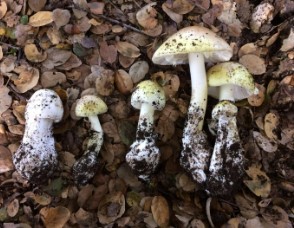
Can Edible Mushrooms Be Used in Natural Dyes or Textile Production?
Can Edible Mushrooms Be Used in Natural Dyes or Textile Production?
1. Introduction
Mushrooms, with their diverse shapes, colors, and textures, have long fascinated humans, not only as a culinary delight but also as a potential source of natural dyes for textile production. While synthetic dyes have dominated the textile industry for decades, the adverse environmental and health impacts associated with their production and usage have spurred interest in sustainable alternatives. Edible mushrooms, known for their rich pigments and eco-friendly attributes, have emerged as a promising candidate in the realm of natural dyes. This article explores the feasibility of using edible mushrooms in textile dyeing processes, examining their potential benefits, challenges, and applications.
2. The Relationship Between Mushrooms and Textile Dyeing
The history of natural dyeing dates back thousands of years, with civilizations around the world utilizing plant, mineral, and even animal sources to color textiles. Mushrooms, although less commonly explored compared to plants, have been employed in dyeing practices in various cultures. The pigments contained within mushrooms, such as anthraquinones, indigoids, and carotenoids, offer a spectrum of colors ranging from earthy browns and yellows to vibrant reds and purples.
3. Edible Mushrooms as a Source of Natural Dyes
3.1. Types of Edible Mushrooms Used in Dyeing
Numerous edible mushrooms possess dyeing potential, each contributing unique hues and characteristics to the dyeing process. Some of the commonly used species include the:
- Lentinula edodes (Shiitake mushroom)
- Grifola frondosa (Maitake mushroom)
- Pleurotus ostreatus (Oyster mushroom)
- Agaricus bisporus (Button mushroom)
- Hericium erinaceus (Lion’s Mane mushroom)
These mushrooms are valued not only for their culinary uses but also for their ability to yield a diverse range of colors when used as natural dyes.
3.2. Extraction Methods for Mushroom Dyes
The process of extracting pigments from mushrooms involves several steps, including harvesting, drying, and grinding the fungal material to a fine powder. Subsequent extraction techniques, such as boiling, simmering, or soaking the mushroom powder in water or other solvents, help release the pigments into the solution. Depending on the desired color intensity and hue, varying extraction times and temperatures may be employed.
3.3. Color Palette and Properties of Mushroom Dyes
Mushroom dyes offer a wide array of colors, influenced by factors such as the species of mushroom, the part of the mushroom used (caps, stems, or mycelium), and the mordants or modifiers employed during the dyeing process. Common shades obtained from mushroom dyes include earthy browns from Shiitake mushrooms, soft pinks from Oyster mushrooms, and rich yellows from Maitake mushrooms. Additionally, the inherent properties of mushroom dyes, such as their ability to bond with natural fibers like wool and silk, contribute to the uniqueness and durability of the resulting colors.
4. Advantages and Challenges of Using Mushroom Dyes
4.1. Environmental Sustainability
One of the primary advantages of using mushroom dyes lies in their eco-friendly nature. Unlike synthetic dyes, which often contain harmful chemicals and pollutants, mushroom dyes are derived from natural sources and pose minimal risk to the environment. Furthermore, the cultivation of edible mushrooms for dyeing purposes can be integrated into sustainable agricultural practices, promoting biodiversity and reducing reliance on fossil fuels.
4.2. Health and Safety Considerations
Another benefit of mushroom dyes is their non-toxic and hypoallergenic properties, making them safe for both the environment and human health. Unlike synthetic dyes, which may contain carcinogens and allergens, mushroom dyes pose minimal risk of adverse health effects when used in textile production. This makes them particularly suitable for individuals with sensitivities or allergies to chemical dyes.
4.3. Color Fastness and Durability
While mushroom dyes offer excellent color fastness on natural fibers such as wool and silk, they may exhibit less stability on synthetic materials like polyester and nylon. However, advancements in dyeing techniques and mordanting processes continue to improve the durability and wash-fastness of mushroom dyes on a broader range of textile substrates.
5. Applications of Mushroom Dyes in Textile Production
5.1. Fashion and Apparel
The fashion industry is increasingly embracing sustainable practices, with many designers and brands seeking alternatives to synthetic dyes. Mushroom dyes offer a natural and eco-friendly solution for coloring textiles, allowing fashion designers to create vibrant and unique garments while minimizing their environmental footprint. From haute couture to casual wear, mushroom-dyed fabrics appeal to eco-conscious consumers seeking ethical and environmentally responsible fashion choices.
5.2. Home Textiles and Interior Design
In addition to fashion, mushroom dyes find applications in home textiles and interior design, where natural, organic aesthetics are valued. Curtains, upholstery fabrics, and bedding dyed with mushroom pigments add warmth and character to interior spaces, evoking a sense of connection to nature. Furthermore, the use of mushroom dyes in home decor aligns with the growing trend of eco-conscious living, promoting sustainability and environmental stewardship.
5.3. Artisanal and Craft Industries
Artisans and craftspeople also appreciate the unique qualities of mushroom dyes for their creative projects. Whether dyeing yarn for knitting and weaving or hand-painting textiles for artistic expression, mushroom dyes offer endless possibilities for experimentation and exploration. The natural variations in color and texture contribute to the charm and authenticity of handmade goods, appealing to consumers seeking one-of-a-kind, artisanal products.
6. Innovations and Future Directions
As interest in sustainable fashion and textiles continues to grow, researchers and practitioners are exploring innovative techniques to enhance the use of mushroom dyes in textile production. Advancements in mushroom cultivation, extraction methods, and dyeing processes hold promise for improving color consistency, efficiency, and scalability. Furthermore, collaborations between scientists, designers, and industry stakeholders pave the way for the development of new applications and markets for mushroom-dyed textiles.
At Lone Star Mushrooms, our mission is simple yet profound—to provide a diverse range of high-quality mushrooms while prioritizing environmental responsibility. We believe in the magic of mushrooms not only as a culinary delight but also as a sustainable and nutritious food source.
7. Conclusion
In conclusion, the use of edible mushroom as natural dyes in textile production offers a sustainable and environmentally friendly alternative to synthetic dyes. With their rich pigments, non-toxic properties, and versatility, mushroom dyes provide a viable solution for creating vibrant




